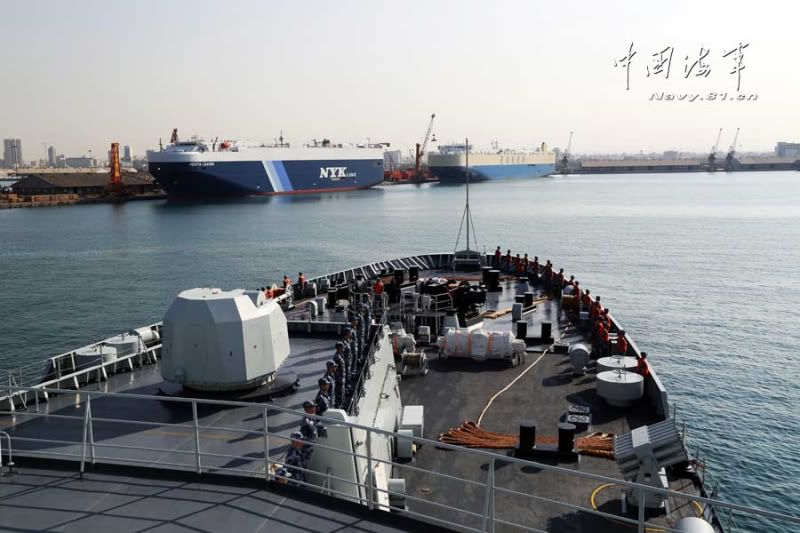re: PLAN Type 071 LPD & its Landing Craft
The LASH system was designed for carrying "Lighters" which are basically barges, aboard transport vessels to move them over long distances by sea. Ultimately, because of the regualtions involved with the barges themselves and costs associated with those regulations once a lighter/barge was carried onto the inland waterways, the system became economically infeasable and has pretty much dried up.
Basically it involved having a lift that would pick up the barges (sometimes two at a time) and then stow them on deck.

To make such a system work on an LPD or LHD you would have to put a lift system at the back of the ship and then set up a two level well deck where you could place the upper LCACs on rails or sliders of some type so they could be pushed back at that level. You would probably also add another vehicle loading deck so you could load them on that level too, otherwise you would have to load them all once in the water by shullting them to the lower, "wet" portion of the well deck.
It probably could be done, but you would end up adding a lot of vertical weight to accomodate the 2nd level of LCACs, and then, because of the air assault capability of these ships, you would have to have the helo deck above all of that.
I just do not think it would be very feasible for the rapid loading and unloading of LCACs, but it could be done. Naval architects would have to put their heads together and figure it out. Perhaps they have already considered it and that is why we do not see the technology being applied. I just don't know.
Interesting.It occured to me there is another way to make a LPD hold 6 big LCACs. It is to use a lighter aboard ship (LASH) configuration instead of a standard wet well deck. This would allow 6 loaded LCACs to be stored in two layers in a 071 sized hull. I am not sure if it would be feasible to have a helicopter deck over the well without significantly increasing 071's freeboard.
The LASH system was designed for carrying "Lighters" which are basically barges, aboard transport vessels to move them over long distances by sea. Ultimately, because of the regualtions involved with the barges themselves and costs associated with those regulations once a lighter/barge was carried onto the inland waterways, the system became economically infeasable and has pretty much dried up.
Basically it involved having a lift that would pick up the barges (sometimes two at a time) and then stow them on deck.
To make such a system work on an LPD or LHD you would have to put a lift system at the back of the ship and then set up a two level well deck where you could place the upper LCACs on rails or sliders of some type so they could be pushed back at that level. You would probably also add another vehicle loading deck so you could load them on that level too, otherwise you would have to load them all once in the water by shullting them to the lower, "wet" portion of the well deck.
It probably could be done, but you would end up adding a lot of vertical weight to accomodate the 2nd level of LCACs, and then, because of the air assault capability of these ships, you would have to have the helo deck above all of that.
I just do not think it would be very feasible for the rapid loading and unloading of LCACs, but it could be done. Naval architects would have to put their heads together and figure it out. Perhaps they have already considered it and that is why we do not see the technology being applied. I just don't know.
Last edited:



